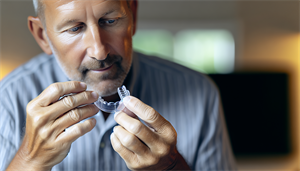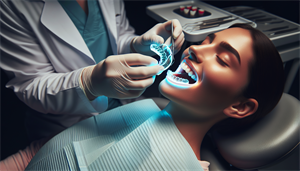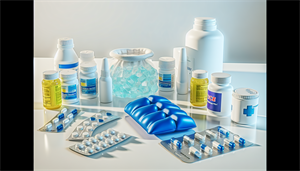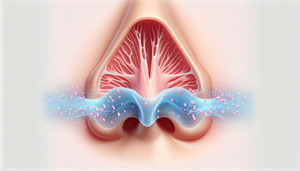Snoring; it’s the unwelcome bedfellow that can disrupt sleep and strain relationships. Anti-snoring mouthpieces have emerged as a popular solution. However, a common issue that users often grapple with is “anti snoring mouthpiece hurts my teeth” sensitivity and discomfort. Let’s embark on a journey to tackle this problem head-on.
Key Takeaways
-
Anti-snoring mouthpieces, including mandibular advancement devices (MADs), are effective for treating sleep apnea but may cause teeth sensitivity, soreness, and changes in tooth positioning or bite alignment. Proper fit is crucial to minimize these effects.
-
Initial discomfort with anti-snoring mouthpieces is common and can include jaw pain and excessive salivation, typically subsiding within 1-5 days. Gradually increasing wear time and ensuring correct fit can ease adaptation, which may take from 2 to 3 weeks.
-
Long-term use of anti-snoring mouthpieces requires monitoring for dental health changes and potential discomfort. Regular dental check-ups, proper maintenance of the mouthpiece, and seeking professional adjustments when necessary are essential for minimizing adverse effects.
Teeth Sensitivity and Anti Snoring Devices

Snoring may seem like a harmless nuisance, but it’s a sign of a deeper issue - sleep apnea. Sleep apnea devices, particularly anti-snoring mouthpieces, have gained ground as an effective sleep apnea treatment. However, they’re not without their drawbacks. Dental sleep medicine has identified a correlation between teeth sensitivity and the use of these devices. Yes, your goal to eliminate snoring may come with a price - discomfort in your upper and lower jaw, loose teeth, and sore back teeth.
The condition of your teeth is a significant factor in this scenario. Snoring and sleep disordered breathing can be effectively managed by mandibular advancement devices (MADs), but they can also lead to:
-
tooth movements and changes
-
excessive salivation
-
sore jaw or teeth
-
potential for chipped or broken teeth if not fitted properly
Now, don’t be alarmed. Most side effects are temporary and can be readily addressed. The key lies in identifying the pain points and understanding the reasons behind the discomfort.
Identifying the Pain Points
Pinpointing the areas of pain is the initial step in managing discomfort. Sore jaw muscles, pressure on the teeth, and general irritation are some of the typical discomforts associated with MADs. These areas need to be identified to make necessary adjustments to the mouthpiece for a more comfortable fit.
If you’ve been experiencing discomfort, it might be due to a poorly fitted dental device. A well-adjusted device should not cause tooth movements or changes, excessive salivation, or misalignment of the jaw. Remember, your anti-snoring device is meant to help you sleep better, not keep you up with a sore jaw or teeth.
Reasons Behind Tooth Discomfort
Tooth discomfort when using oral appliances for snoring typically stems from an ill-fitting device. The pressure applied on the teeth during obstructive sleep can lead to tooth displacement and alterations in your bite. However, current evidence does not directly attribute tooth discomfort to the materials used in sleep apnea devices. This means that the material of your mouthpiece is less likely to be the culprit. So, if you’ve been blaming that thermoplastic material for your toothache, it’s time to shift your focus to the fit of your device.
It’s also worth noting that the discomfort does not indicate the effectiveness of your sleep apnea treatment. Temporary discomfort is a common part of the adjustment process. However, if discomfort persists, it might be a sign that your oral device needs adjustment or that you need to seek alternative treatments.
Adjusting to Your Mouth Guard: Patience is Key

Patience is required in the journey of adapting to your new mouth guard. It involves acclimating to the feeling and fit of the appliance in your mouth over time. The initial discomfort usually occurs within the first 1-5 days and affects both the upper and lower jaw. However, the typical duration for adapting to a new mouth guard is up to three weeks.
Like all good things in life, gradual use of your new snoring mouth guard is the key. It’s advisable to start by wearing it for a few hours before bedtime and gradually increase the duration. Make sure your mouth guard is properly fitted and seek guidance from sleep specialists or dentists if necessary.
Timeline for Adaptation
The typical duration for adjusting to a new anti-snoring mouthpiece is approximately 2 to 3 weeks, although some manufacturers recommend an acclimation period of approximately 7 to 10 days. But remember, everyone is unique, and the adjustment period can differ from individual to individual. Various factors such as body mass index, age, and pre-existing conditions like temporomandibular joint (TMJ) pain can impact this duration.
The typical stages of adaptation involve:
-
An initial adjustment period of three to seven nights, during which the mouthpiece’s protrusion is set by stretching the lower jaw forward.
-
Some individuals may require more than a week to sleep comfortably with the mouthpiece.
-
Over the course of weeks or months, adjustments to the device may be necessary, potentially requiring the assistance of a dentist.
Tips for Easing into Use
Easing into the use of your new mouth guard can be made smoother with a few handy tips. Start by practicing correct insertion. Ensure the mouth guard is at a warm, comfortable temperature and use a mirror for alignment. Gentle insertion after aligning your upper teeth into the tray is recommended. Follow the ‘boil and bite’ process for a custom impression and ensure it fits snugly against your top teeth after cooling down.
Gradually acclimating to the use of a sleep apnea device, such as an oral appliance for obstructive sleep apnea like continuous positive airway pressure, also includes performing mouth exercises, such as holding the tongue against the roof of the mouth to strengthen it, and consistently wearing the device every night to allow the body to become accustomed to it.
Maintaining oral hygiene is essential for the proper use of a snoring mouthguard as it helps prevent discoloration, unpleasant odors, and bad breath, ultimately improving the overall benefits and comfort provided by the device.
Proper Fit: The Foundation of Comfort

Ensuring a proper fit of anti-snoring devices is critical in minimizing snoring and promoting a restful night’s sleep. A well-fitted device can help prevent common issues such as:
-
drooling
-
temporomandibular disturbances
-
permanent dental damage
-
tooth movement
-
jaw problems
-
discomfort
-
the exacerbation of sleep apnea symptoms.
Fitting a custom mouth guard for snoring involves a procedure that includes the following steps:
-
Boil water and submerge the mouthpiece.
-
Place the mouthpiece in your mouth and bite down.
-
Hold the bite for a few seconds.
-
Remove the mouthpiece and place it in cold water to set the impression.
The best place to obtain customized mouth guards is from dentists who work closely with dental laboratories.
Importance of Custom Fitting
Custom fitting of anti-snoring devices involves creating a design personalized to the user or making necessary adjustments to ensure an optimal and comfortable fit. This helps alleviate tooth pain by ensuring proper fit and alignment with the teeth, thereby reducing pressure and discomfort during use.
A dental professional achieves custom fitting for a mouth guard by taking impressions of the individual’s teeth and creating a personalized device that is tailored to their specific oral structure. On the other hand, non-custom fitted anti-snoring devices may lead to:
-
discomfort
-
persistent snoring
-
potential dental damage
-
tooth movement
-
jaw problems
When to Seek Professional Adjustment
Experiencing some discomfort when first using a snoring device is common. This discomfort generally diminishes after approximately two weeks of consistent use. However, persistent discomfort or increased pain may be attributed to various side effects including:
-
drooling
-
temporomandibular disturbances
-
dental discomfort
-
excessive salivation
-
dry mouth
-
jaw pain
-
facial discomfort
-
difficulty speaking or swallowing
-
ear or jaw pain
-
dryness and irritation of the mouth and throat
If you experience any of these side effects, it is recommended to consult with a healthcare professional.
Improperly fitted snoring devices may result in:
-
Drooling
-
Temporomandibular disturbances
-
Jaw soreness
-
Discomfort
All of these can have adverse effects on dental health. Therefore, it’s advisable to seek professional adjustment for your anti-snoring mouthpiece if the discomfort persists or worsens beyond the initial adjustment period of approximately two weeks.
Mitigating Tooth Pain Caused by Snoring Appliances

Although snoring mouthpieces can greatly benefit many sleep-deprived individuals and their bed partners, they might sometimes cause tooth pain. However, the pain can be managed effectively with a combination of at-home remedies and long-term strategies.
At-home remedies such as:
-
rinsing with salt water
-
brushing with bamboo salt
-
gargling with garlic juice
-
oil pulling
On the long-term front, maintaining oral hygiene, scheduling regular dental check-ups, rinsing with salt water (particularly before bedtime), considering the use of sleep apnea mouthguards to enlarge the airway, and exploring oral appliance therapy can all help reduce tooth pain.
At-Home Remedies
Over-the-counter pain relievers that can be effective in managing toothache pain include:
-
Ibuprofen
-
Naproxen
-
Aspirin
-
Acetaminophen
For topical relief, over-the-counter oral analgesics such as Orajel® and Anbesol® may provide soothing effects for sore gums and teeth.
Another effective at-home remedy is rinsing with a warm saltwater solution. This can be prepared by dissolving half a teaspoon of salt in 8 ounces of warm water. After rinsing, it’s advisable to spit out the solution and delicately floss around the affected areas if necessary.
Applying an ice pack on the outside of your mouth near the painful area for approximately 15 minutes, several times a day as needed, can also help reduce inflammation and alleviate the discomfort.
Long-Term Solutions
Long-term solutions are required for prolonged tooth pain. Regular dental check-ups are essential, especially if you are experiencing any side effects from using the snoring mouthpiece. It is advisable to consult the dentist who provided your appliance for specific guidance.
Proper maintenance of the mouthpiece is also key to managing tooth pain. Regular cleaning of the mouthpiece is advised, preferably after each use using a gentle dish soap. Furthermore, a thorough cleaning with a baking soda paste or denture cleaner on a weekly basis is recommended to uphold hygiene and effectiveness.
If your anti-snoring mouthpiece continues to cause discomfort, don’t hesitate to explore other options. Here are some potential alternatives to consider:
-
Engaging in mouth and throat exercises
-
Adjusting sleep position
-
Weight management
-
Refraining from alcohol consumption
-
Utilizing nasal strips or sprays
-
Exploring different types of snoring mouthguards
These alternatives may help treat snoring and obstructive sleep, ultimately improving your sleep quality.
Distinguishing Between Temporary and Persistent Side Effects
Distinguishing between temporary side effects of using a mouthpiece and persistent issues is vital to your comfort and overall dental health. Typical transient side effects of using these devices encompass:
-
drooling
-
temporomandibular disturbances (TMJ)
-
tooth discomfort
-
temporary adverse sensitivities of teeth and mastication muscles
These side effects typically have a short-term duration and should not be a cause for alarm.
However, potential long-term effects of using mouthpieces for snoring include:
-
Jaw soreness and tension
-
Hypersalivation
-
Mucosal dryness
-
Tooth discomfort
-
Tender gums
-
Skeletal and dental changes
-
Sore jaw muscles
-
Dry mouth
If these side effects persist, it’s advisable to seek guidance from a sleep specialist or dentist who can make adjustments to the mouth guard or suggest alternative treatments.
Dental Health Considerations with Continuous Use
Despite the effectiveness of anti-snoring mouthpieces in managing sleep apnea, it is crucial to keep in mind the dental health considerations that come with their continuous use. Potential dental health implications of prolonged use of these devices include:
-
Excess salivation
-
Xerostomia (dry mouth)
-
Temporomandibular joint pain
-
Dental discomfort
-
Myofacial discomfort
To mitigate these risks, maintaining a healthy lifestyle, utilizing mouthguards, engaging in stress reduction practices, and exploring medication options to minimize sleep disturbances and tooth damage can all be effective preventative measures. Prolonged use of a snoring mouthpiece may also result in side effects such as increased salivation or dryness of the mouth, jaw muscle stiffness, tooth discomfort, and teeth grinding.
Preventative Measures
It is crucial to have regular dental check-ups when using an anti-snoring mouthpiece. Dental professionals recommend scheduling these check-ups every six months to ensure timely detection and resolution of any potential issues.
Maintaining your mouthpiece is also crucial. Regular cleaning, preferably after each use using a gentle dish soap, is recommended. Furthermore, a thorough cleaning with a baking soda paste or denture cleaner on a weekly basis can help uphold hygiene and effectiveness of the device.
It’s also important to manage any dry mouth symptoms while using an anti-snoring appliance as part of your preventative measures.
Monitoring Changes in Dental Health
It is vital to monitor changes in dental health when using an anti-snoring mouthpiece over a long term. Potential dental health changes linked to prolonged use of snoring devices encompass:
-
Drooling
-
Temporomandibular disturbances
-
Dentoskeletal changes
-
Occlusal changes
Regular dental check-ups are essential, especially if you are experiencing any side effects from using the snoring mouthpiece. It is advisable to consult the dentist who provided your appliance for specific guidance.
Summary
In conclusion, while anti-snoring mouthpieces can be a game-changer for those struggling with sleep apnea, it’s important to be aware of the potential for teeth sensitivity and discomfort. Identifying the pain points, ensuring a proper fit, and taking the proper steps to adjust to the mouth guard are all crucial for a comfortable experience.
Regular dental check-ups and maintaining good oral hygiene can also go a long way in mitigating potential dental health risks. Remember, your journey to a restful night’s sleep doesn’t have to come at the expense of your dental health.
Frequently Asked Questions
Why does my mouth guard hurt my teeth when I snore?
Over-the-counter night guards can cause teeth to shift, leading to oral pain and discomfort. It's best to opt for custom-made guards to avoid this issue.
What are the side effects of anti snoring mouthpieces?
Anti-snoring mouthpieces can cause discomfort to the Temporomandibular Joints, leading to jaw, tooth, and ear pain, as well as dry mouth being a common side effect.
What is the typical duration for acclimating to a new mouth guard?
It typically takes up to three weeks to acclimate to a new mouth guard, with initial discomfort often lasting 1-5 days. Adjusting to a new mouth guard can take some time, but the discomfort should improve within the first few days to a week.


